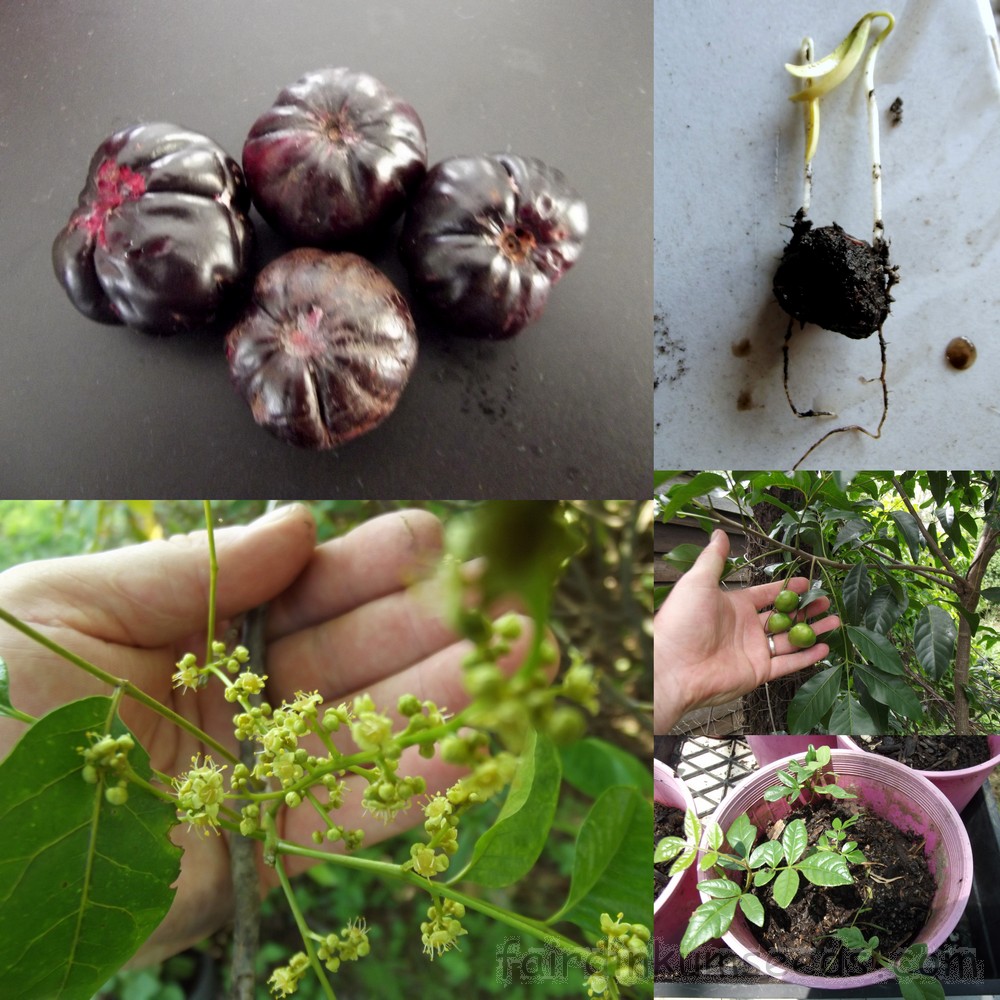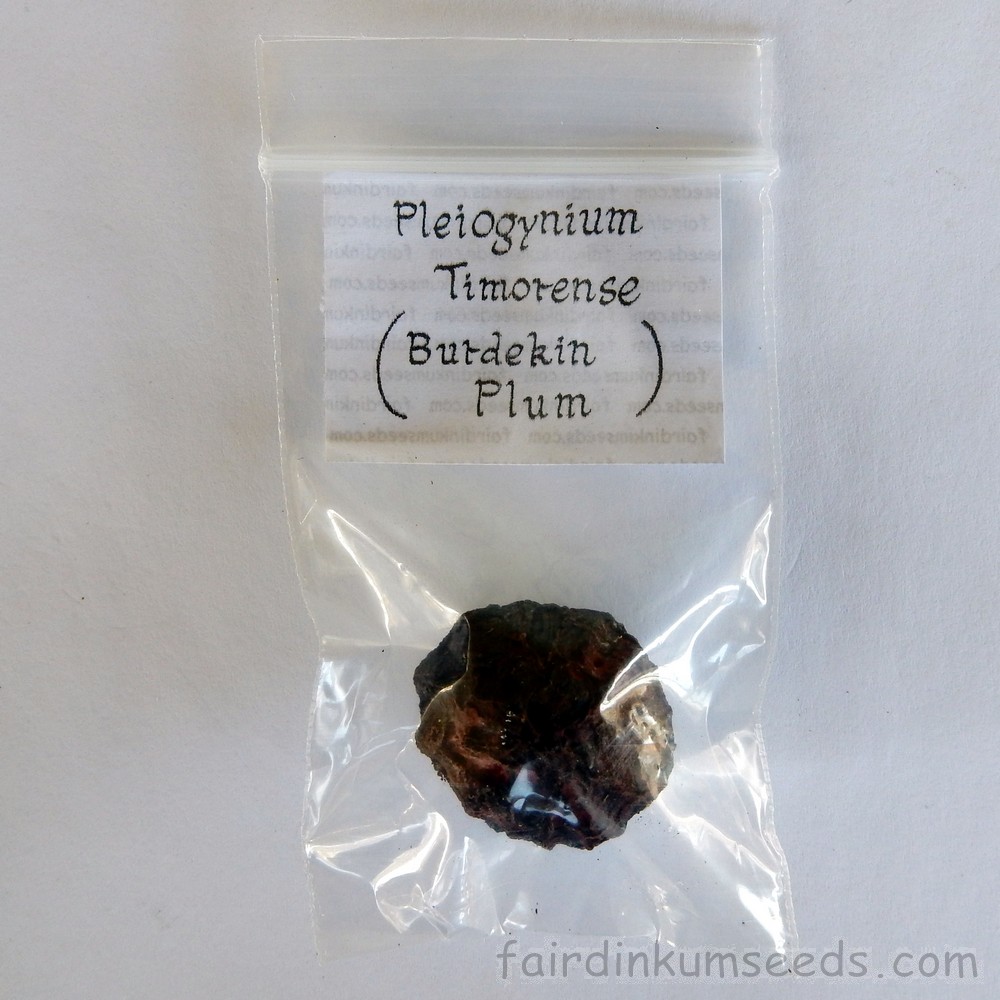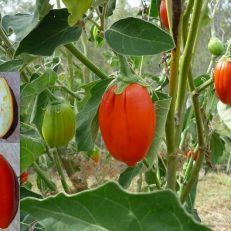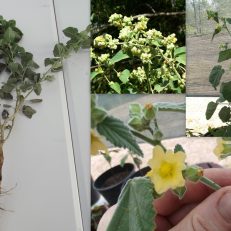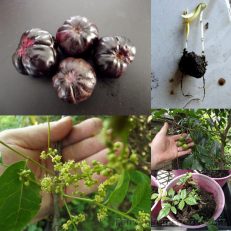Please read text!
Burdekin Plum Pleiogynium Timorense Seed Pod
1 big seed pod of this guy, which for me averages about 10-30seeds or about 3-12 shoots.
The seed pod looks like a Pumpkin x UFO, and on every ridge the whole way around is a little bump, and that little bump is the actual “seed” bit, where the shoot comes out.
Most of them have 10-30 of them, but I never get every single one strike, normally a third though, after about 2 months planted 1 inch deep in a nice sandy soil. (I did extensive testing here and that’s the best depth for me). You plant the whole pod, as is, and carefully divide the shoots up a few months later when most of them have come up.
I love the taste of them, although they can be a bit sour if unripe (obviously…).
Folks say to bury the green fruit in the ground or wet sand for a few days like the Aboriginals did, but I reckon that its better to just eat the ripe fruit, as there is always a heap on the tree and on the ground around it.
I collect some of these seeds from a friends place and some from the bush locally as we don’t have our own fruiting trees yet (working on it though!).
Its official name is Pleiogynium timorense but its commonly known as Burdekin plum and it’s a native to Australia and Papua New Guinea where it is a common bushtucker species.
It is very closely related to mangoes and cashew nut trees, and has the same sort of growth.
Huge in lush rainforest areas growing up to 20meters if left to its own devices, but quite compact and manageable in home gardens, if given the odd haircut.
They are great as is eaten raw, cooked into jam or jelly, used to flavour meat, or even to make wine or hooch.
The fruit is really refreshing in the heat with about ~70% water, but it also has respectable amounts of Vitamin C is high in fibre, protein and most minerals.
Great timber for woodworking, and highly valued by wood-turners as its considered one of the very best of our native species.
That’s about it really…
Wild harvested and/or organically grown by a friend of ours, no nasties, no chems, no problems!!!
